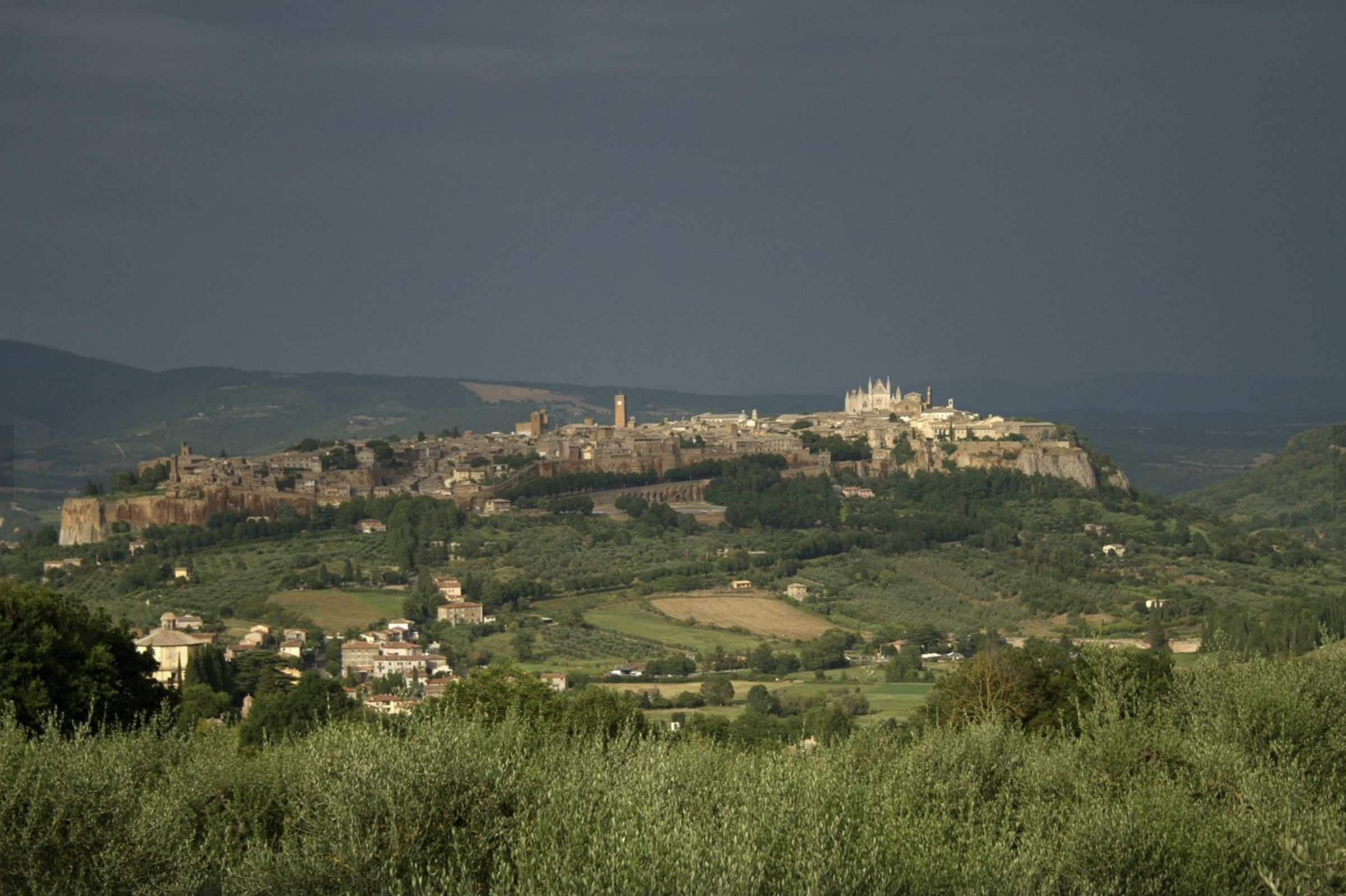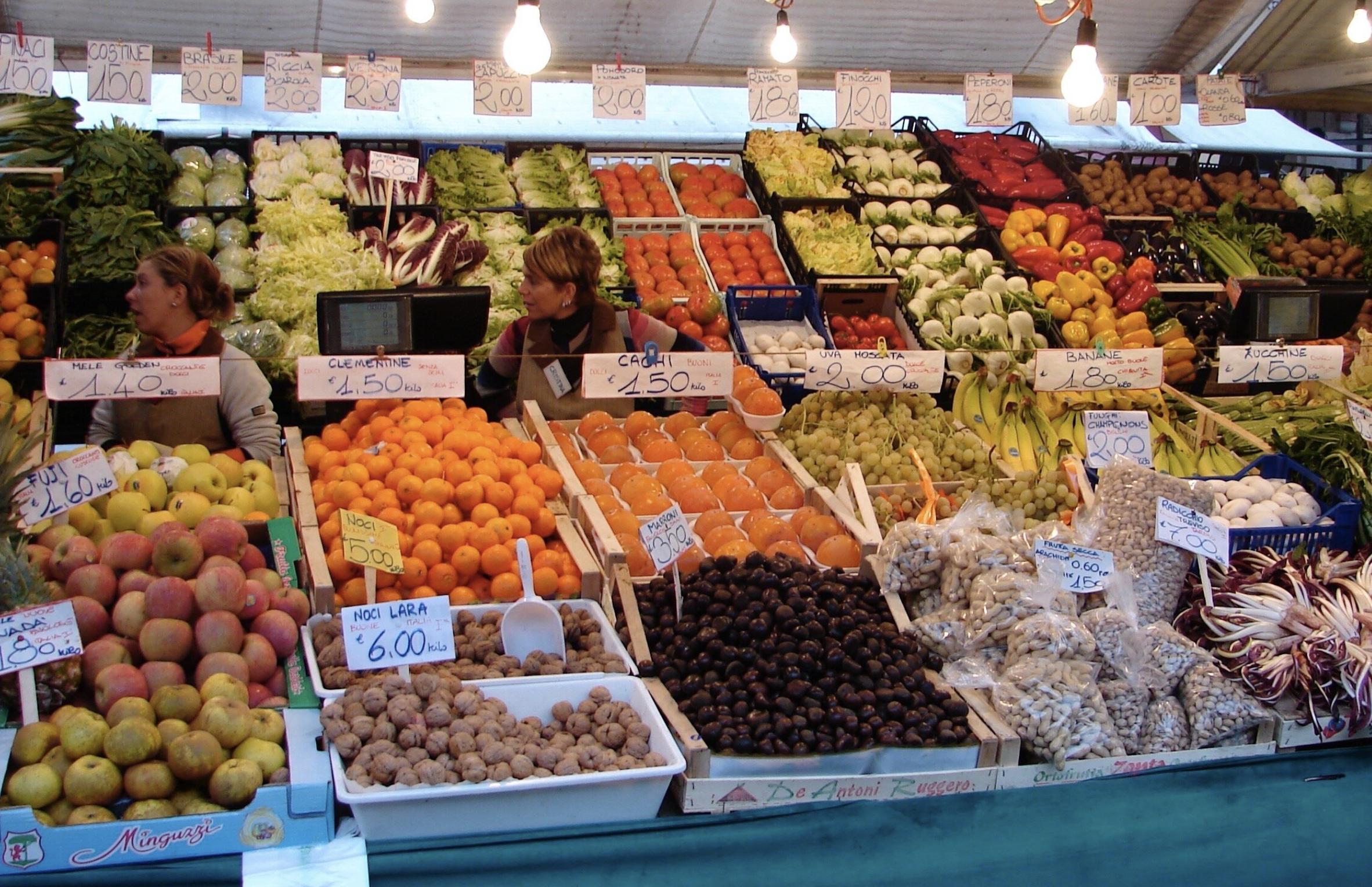Classical-Christian Learning
JOHN SKILLEN
The liberal arts and Tertullian’s question
The seven liberal arts in the curriculum frescoed on the wall of the Chapter House of the Dominican monastery of Santa Maria Novella in Florence, with a famous practitioner from history of each liberal art, painted by Andrea da Firenze in the 1360s. (photo Gianna Scavo)
The foundation of ancient-modern classical education is the liberal arts. These were codified in a curriculum of the three word-arts of language and thought—the trivium of grammar, logic, and rhetoric—and the quadrivium of the four number-arts: arithmetic, geometry, music, and astronomy.
These seven liberal arts were understood as the keys that open every area of human knowing, equipping people with practical wisdom for whatever society, culture, governance, the economy, technology, and the environment may throw at them.
A growing educational movement to revivify these “lost tools of learning” (as Dorothy Sayers titled her still-influential essay from 1948) believes that the classical arts of thought and language are all the more needful in any society marked and marred, as is ours, by debased language, by the hijacking of logically-coherent civil debate by a polarized din of alternative truths, and by a rhetoric too often reduced to ad hominem ridicule.
“What has Jerusalem to do with Athens, the Church with the Academy?” asked third-century church father Tertullian. Every classical-Christian school, implicitly or explicitly, offers a positive response to Tertullian’s famous if skeptical question. The liberal arts curriculum is a product of the “Academy.” The cardinal virtues of prudence, justice, temperance, and fortitude were given formal definition by Aristotle and Cicero before being incorporated into a Christian understanding of character by figures of the Church from Augustine to Aquinas.
basil’s bees
To explain how Christians can transform the best of the classical cultural heritage without compromising Christian faith, fourth-century church father Saint Basil of Caesarea turned to the honeybees. In his letter “to adolescents on the right use of Greek [that is, pagan] literature,” Basil writes:
For just as the bees possess the power to get honey from the flowers … so it is possible for those who are pursuing not merely what is sweet and pleasant in such writings to store away from them some benefit also for their souls. It is, therefore, in accordance of the whole similitude of the bees, that we should participate in the pagan literature. For these [bees] neither approach all flowers equally, nor in truth do they attempt to carry off entire those upon which they alight, but taking only so much of them as is suitable for their work, they suffer the rest to go untouched. We ourselves too, if we are wise, having appropriated from this literature what is suitable to us and akin to the truth, will pass over the remainder.
Virgil and Ovid looking at each other, below the scene of the gathering of the Damned souls (photo author)
In the early 1500’s the painter Raphael was commissioned by Pope Julius II to fresco the walls of the Pope’s library with a sort of living card catalog. The result amounts to a magisterial visual face-off between the classical heritage of philosophy (depicted as the so-called School of Athens) and the Christian heritage of theology (depicted on the opposite wall). A second perhaps more sophisticated visual exploration of Tertullian’s question is found in the Duomo of Orvieto. Covering every square inch of the Chapel of San Brizio, this monumental program of the End Times and the Last Judgment was begun by Fra Angelico and completed by Luca Signorelli around 1504, a few years earlier than Raphael’s work in the Pope’s library. In the decorative lower zone, trompe l’oeil windows frame great figures of classical thought and literature surrounded by episodes from their writings. These scenes present analogies, partial anticipations, and shadowy types of the scenes of Christian eschatology unfolding in the enormous murals above them.
Below the mural depicting luridly-colored demons herding the damned souls into hell’s mouth are the figures of Ovid and Virgil, with the various descents into the Underworld found in their writings. Illustrated in the rondels around Virgil are Hercules rescuing Theseus, and Aeneas holding the golden bough that serves as his round-trip ticket to Hades. Given double space is the story of poet-musician Orpheus’s unsuccessful mission to retrieve his beloved Eurydice—understood as a sort of inverse parallel to Christ’s descent into Hell (as Christians affirm in the Apostles’ Creed) before his Resurrection.
Orpheus looks back to see if Eurydice is still behind him, violating the condition set by Pluto. Eurydice is dragged back down to Hades (photo author)
Virgil’s extended account of the Orpheus and Eurydice myth occurs—of all places—in the Georgics, a sort of encyclopedic farmer’s almanac whose annotations draw on all human learning, cosmology, and mythology. Agriculture meets culture. Book Four of the Georgics is given to the topic of beekeeping. There, Virgil narrates the story of Aristaeus, the bee-keeper whose lustful pursuit of Eurydice leads to her death, bitten by a poisonous viper lurking in a flowery meadow. As the gods’ punishment, Aristaeus loses his bees “through disease and hunger” (a threat to the hives of our own day). Virgil takes the occasion to recount the story of Orpheus’s descent into Pluto’s kingdom of the dead to retrieve his beloved Eurydice—the stuff of story ever since, as recently as the Broadway musical hit, Hadestown.
Virgil’s and Basil’s Bees can serve as a touchstone for a newish development within the classical-schooling community: namely, to revitalize the pre-modern connection between the liberal arts and the so-called common arts of artisan handcraft (skilled use of tools in carpentry and building, every sort of weaving and needlework), along with the arts of agriculture (gardening and animal husbandry and bee-keeping). Here I’ve cited the list elaborated in the influential twelfth-century treatise by the scholar-monk Hugh of St. Victor on the branches of learning: the Didascalicon. Included among the common arts is theater—the art of edifying and refreshing entertainment for the community that requires a lot of hands-on “mechanical” skill, especially in an age when theater was a peripatetic enterprise with complex portable staging.
The rapid loss of hand-skill in our own age is no less worrisome than the erosion of the skills of language and thought. Many of us in contemporary society, pecking our way through the day with thumbs on our smartphones, have become “all thumbs.” “Medical schools are noticing a decline in students’ dexterity, possibly from spending time swiping screens rather than developing fine motor skills through woodworking and sewing,” is the by-line of a long article by a medical school professor about the dangerous ineptitude of surgeons-in-training. Our hand-held technologies have dislocated our bodily engagement with the natural environment around us. We check our weather app rather than stepping out the front door to register temperature and humidity. When driving, we pay more attention to our map-app than to the actual terrain around us. Labor-saving devices have weakened our aptitude to handle the tools of house-keeping. The complex innards of mixers and microwaves, of cars and commuters, require repair by experts, a topic addressed in Matthew Crawford’s book Shop Class as Soulcraft. (A long excerpt from the book is found in The New Atlantis here.) We can’t keep track of bird populations, or tree health, in our local environment, not only from our ignorance but because we don’t live long enough in the same place to recognize long-term patterns and to share observations among neighbors. We’re often in the dark about where our food comes from; and if (like me) we would like to keep a garden, we haven’t a clue what vegetables will thrive in our climate and geography. The riches and richness of the earth are in jeopardy. And even if we do care about our stewardship of the earth, many of us feel ill equipped to educate and activate our fellow citizens and our own children and grandchildren.
Anglican priest and poet Malcolm Guite captures our communal disconnect from the natural world in his poem “O Radix,” one of his series of sonnets on the “O” Antiphons sung each Advent season in Catholic and Anglican tradition:
We knew the virtues once of every weed,
But, severed from the roots of ritual,
We surf the surface of a wide-screen world
And find no virtue in the virtual.
We shrivel on the edges of a wood
Whose heart we once inhabited in love.
Virgil and Basil—and writers from Homer and Hesiod to pre-modern English poets like Chaucer and Shakespeare and Milton—lived in societies in which philosophy and theology and poetry were never disconnected from deep community-shared knowing of the natural world of birds and bees and flora and fauna, and of the skilled making of the tools of human civilization. Witness the detailed descriptions of weaponry and weaving and the vessels of feasting in the Homeric epics and in Beowulf. In Jeremy Mynott’s fascinating book, Birds in the Ancient World, for instance (compressed in this essay), Mynott alerts us to the hundreds of species found not only in town and country but in the art and literature of the ancient world. (Ovid mentions fifty species, Aristophanes seventy-five; eighty are depicted in the wall murals of houses in Pompeii.)
Wendell Berry is a key contemporary prophet and poet of this loss of our care-full knowing of the earth and its creatures around us. In his recent collection of essays titled The Art of Loading Brush, Berry turns to a 12th-century text that I plowed through in graduate school—Alain de Lille’s encyclopedic The Complaint of Nature—to address the contemporary erosion of our apprehension of the earth under our feet. Berry begins the essay:
We seem to have forgotten that there might be, or that there ever were, mutually sustaining relationships between resident humans and their home places in the world of Nature. We seem to have no idea that the absence of such relationships, almost everywhere in our country and the world, might be the cause of our trouble. (p. 103)
Interestingly, a measurable result of the on-going coronavirus pandemic—grievous in its loss of life and livelihood, and cause of a debilitating anxiety suffered by millions—are the testimonies about reconnecting with local turf and with our immediate neighbors. I’ve read about dramatic increases in the sales of knitting supplies, of bicycles and binoculars for birdwatching—or both together, as in this remark on a Bike Forum website: “I keep getting more and more interested in birds along the way. Does anyone with birding experience have suggestions for either specific models or specific qualities [in a bike] I should look for?” An article in The Atlantic titled “Getting Through a Pandemic With Old-Fashioned Crafts,” begins: “Like many others in these times, I’ve turned to arts such as crochet and knitting to make sense of the chaos around me.” Books like Shop Class as Soulcraft and Peter Wohlleben’s The Hidden Life of Trees are surprise best-sellers.
Together, Virgil and Basil and Hugh of St. Victor—and Wendell Berry and other contemporary apologists—can inspire an enriched form of classical-Christian schooling that weaves together the intellectual arts of thought and language and the cultural arts of poetry and visual art and the performing arts, together with the agri-cultural arts of earth-care and the common arts of skilled handiwork. A valuable hands-on handbook is Chris Hall’s new book Common Arts Education: Renewing the Classical Tradition of Training the Hands, Head, and Heart, a sort of redrafting of Hugh of St. Victor’s Didascalicon for our own time, replete with a boat-load of activities for re-tooling our young people.
Such an education may begin with a sense of loss, pained by the debilitating sterility marking not only the Earth’s ecology but the ecosystems of the imagination and the intellect in our time. But it can cultivate an attitude of marvel and gratitude, and strengthen a will charged with hopeful purpose, eyes wide open to the challenges, and equipped to meet them.
Imagine an education where students learn the grammar of bird songs along with the grammar of clear speaking, the logic and math of proportioning the earth while dining on its bounty, the rhetoric of architectural and landscape design along with the patterns of a healthy polis and oikos.
A condensed version of such an education is the summer Heritage program hosted on the campus of Gordon College, close to the Studio’s home on the North Shore of Boston, in the heart of colonial New England. Director Salome Palmer weaves into a single fabric the mind-maturing classical liberal arts, the hand-skills of the artisanal arts, and the heart-work of hospitality and service to local communities.
The historic cliff-top town of Orvieto, set amidst the rural Umbrian landscape in the “green heart of Italy,” has provided a rich stage for the efforts of the Studio for Art, Faith & History to integrate the common arts with the liberal arts.





Budding archeologists excavating the Etruscan market complex under the tutelage of Claudio Bizzarri
As one of the principal cities of the ancient Etruscans, Orvieto is chock full of the vestiges of pre-Roman civilization, to which the Romans added their indelible mark. Most of the existing architectural fabric of the town dates from the 13th and 14th centuries, including its Duomo, built in the early 1300s. (When the distinguished Renaissance humanist scholar and pope Aeneas Sylvius Piccolomini visited Orvieto in 1462, he admired the Duomo as “the equal of any in Italy.”) One can study the Christian adaptation of the classical heritage in architecture and the visual arts right in Orvieto, but Rome and Florence, Siena and Assisi, are not far away.
And yet Orvieto is just as rich with agriculture, even apiculture. The town is surrounded by a patchwork landscape of vineyards, olive groves, small farms, and woods where the moist terrain is perfect for varieties of mushrooms and truffles (items featured in the classic Umbrian cuisine served by our own local chef Maria).









Orvieto is known for its artisan tradition, still alive and well among its ceramicists. Custom shoe-maker Federico Badia (an Umbria Artisan of the Year awardee) is closely connected with our programs, having married a distinguished alumna of Gordon College’s semester program. Hannah is a fine poet, now skilled as well in leather-work. From their restored apartment in an ancient medieval borgo in the countryside nearby, Hannah and Federico keep an organic garden, tend fruit trees, and make wine from their own grapes, with their toddler as an enthusiastic apprentice.
The retreats and seminars of the Studio for Art, Faith & History always include a visit to the home-monastery of the order of Olivetan Benedictines, tucked away in the stunning landscape of southern Tuscany. Frescoed around the cloister are thirty scenes from the life of Saint Benedict, the collaborative work of Luca Signorelli and Sodoma, recognized as one of the masterworks of the Italian Renaissance. The vibrant community of Benedictine monks offer their own program of retreats, but they also keep alive the monastic tradition of beekeeping. Visitors can choose among a vast array of jars of honey, labeled with the particular pollens that went into their making and the particular ailments they can relieve.
What I imagine for the families along the Merrimac River valley is a school that restores some of the resonances of Basil’s metaphor of the bees. I’d wish for our students that Virgil’s Georgics, with its nasty bee-keeper Aristaeus, would become more of a local field guide than an archaic piece of dead and lost literature.
* * * * * * *






